A day at Huanglong National park, and a traffic jam to forget
Drive to Huanglong
After our traditional Tibetan breakfast (butter tea with barley — not recommended) in Songpan, and an anxious wait for our delayed driver (there had been an accident), we checked out and drove into the Sichuan mountains to visit Huanglong national park.
Songpan is already at an altitude of 3000m, but the route kept climbing higher and higher. Our driver stopped and offered us something on the way — all in Chinese we couldn’t fathom what it was, we turned him down but later realised it was probably something for altitude sickness. We felt a little light headed, and I noticed a quickened heart rate, but otherwise we were fine, except perhaps for Sam’s panicking that we wouldn’t be. She stopped worrying when the beautiful sight of mountaintops shrouded in mist appeared, and in the bitterly cold wind we stopped to get some photos.
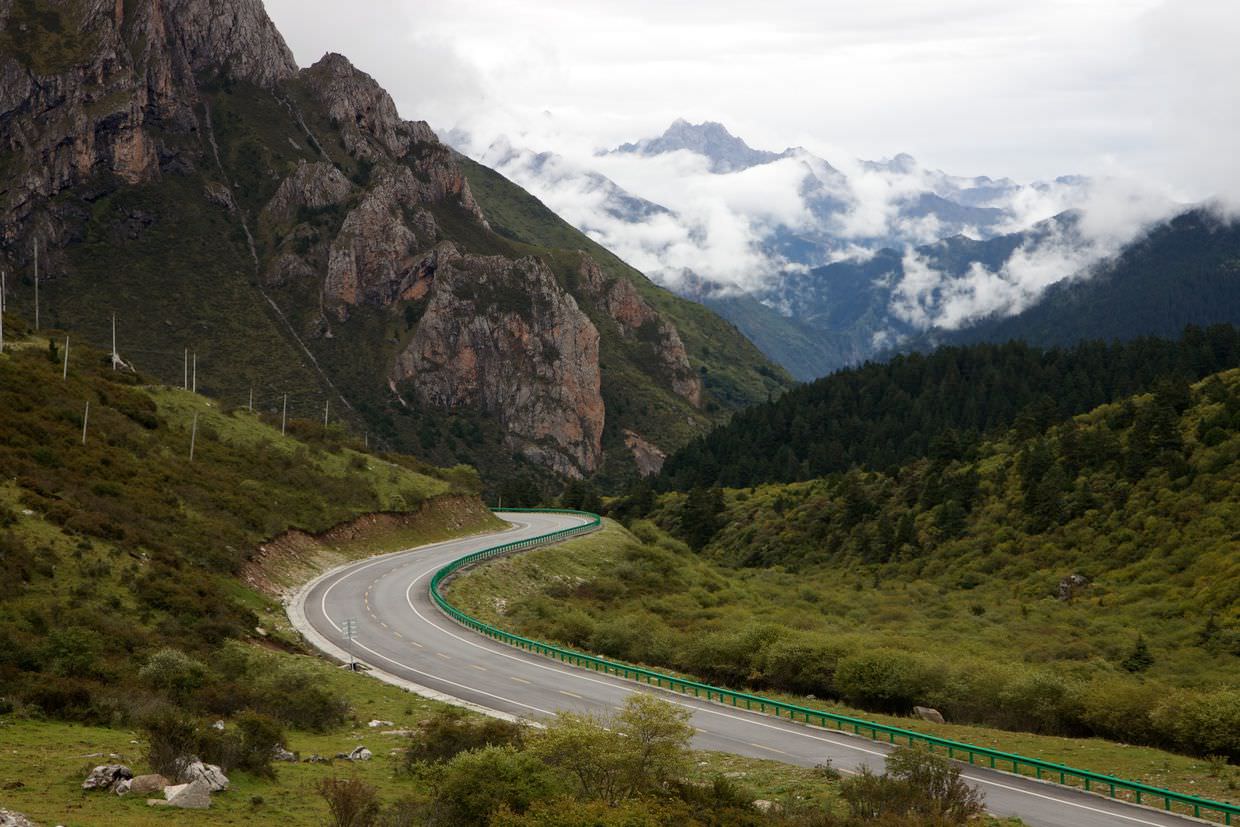
Huanglong national park
The drive was only about an hour and soon we’d arrived at Huanglong, a place famed for its bright blue rock pools created from calcite deposits. It’s a UNESCO world heritage site. With charades we agreed a pick up time and place with our driver and headed up the mountain in a cable car. Its best to start from the top and work your way down, especially given how much more difficult it is hiking up hill at these altitudes.
From the cable car station there’s a magnificent vista of the Min mountain range. It looks out on Route X120 which we’d meandered down to reach the park. The range itself sits on the edge of the Tibetan plateau. Chinese tourists jostle on the wooden platform to get the best spot for selfies and pictures taken with an iPad. Nearby there’s the first of many oxygen bars for those suffering with altitude sickness, and of course there was a shop selling panda merchandise, as is custom all over Sichuan province.
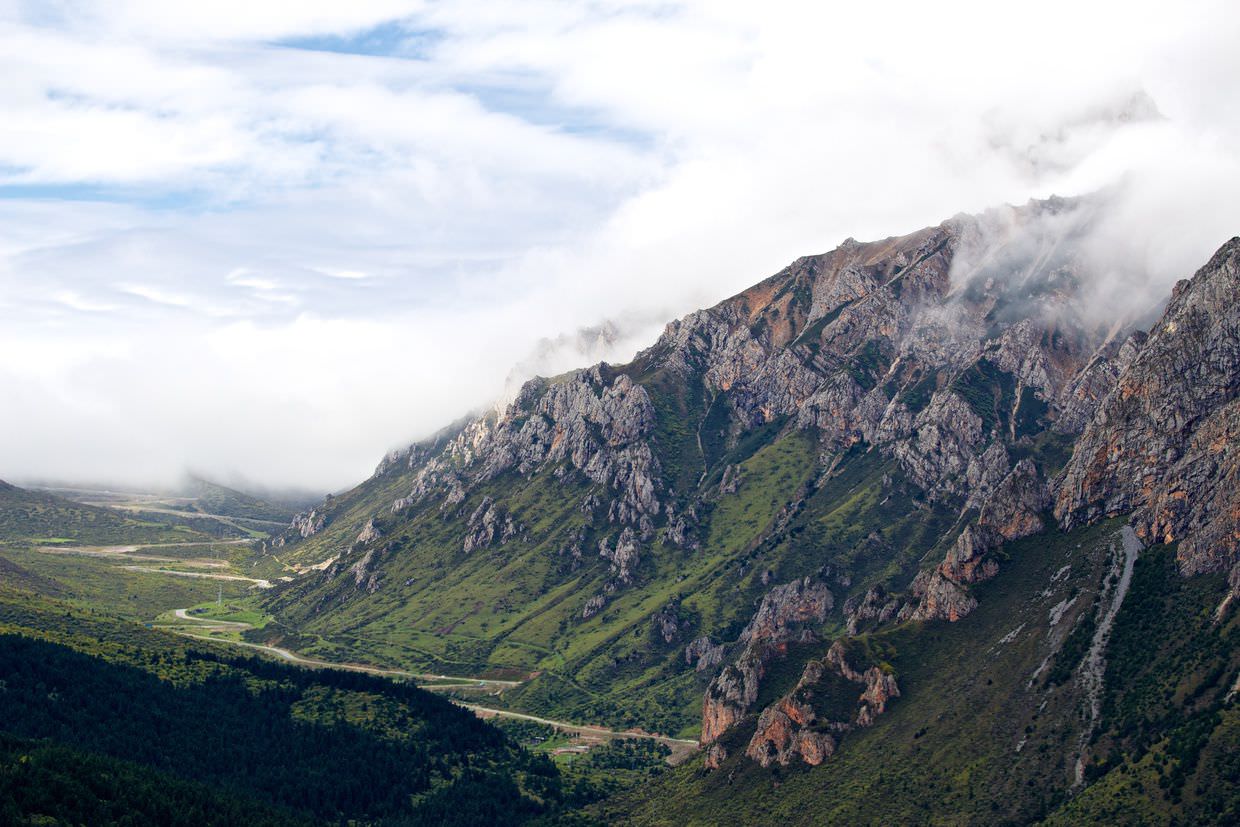
The paved trail lead us downwards into the national park with fabulous forest views and an occasional fleeting glimpse of the pools below. The sun hadn’t broken through the clouds yet and the mountaintop plants were still glistening with dew drops.
Not fully gauging how big the whole of Huanglong park is (there were no maps), we took this trail very slowly. We stopped often to photograph or watch songbirds that danced about the trees, collecting autumn berries. Six or so Chinese grouse were spotted rummaging about the undergrowth too. Above us the clouds kept the mountaintops covered.
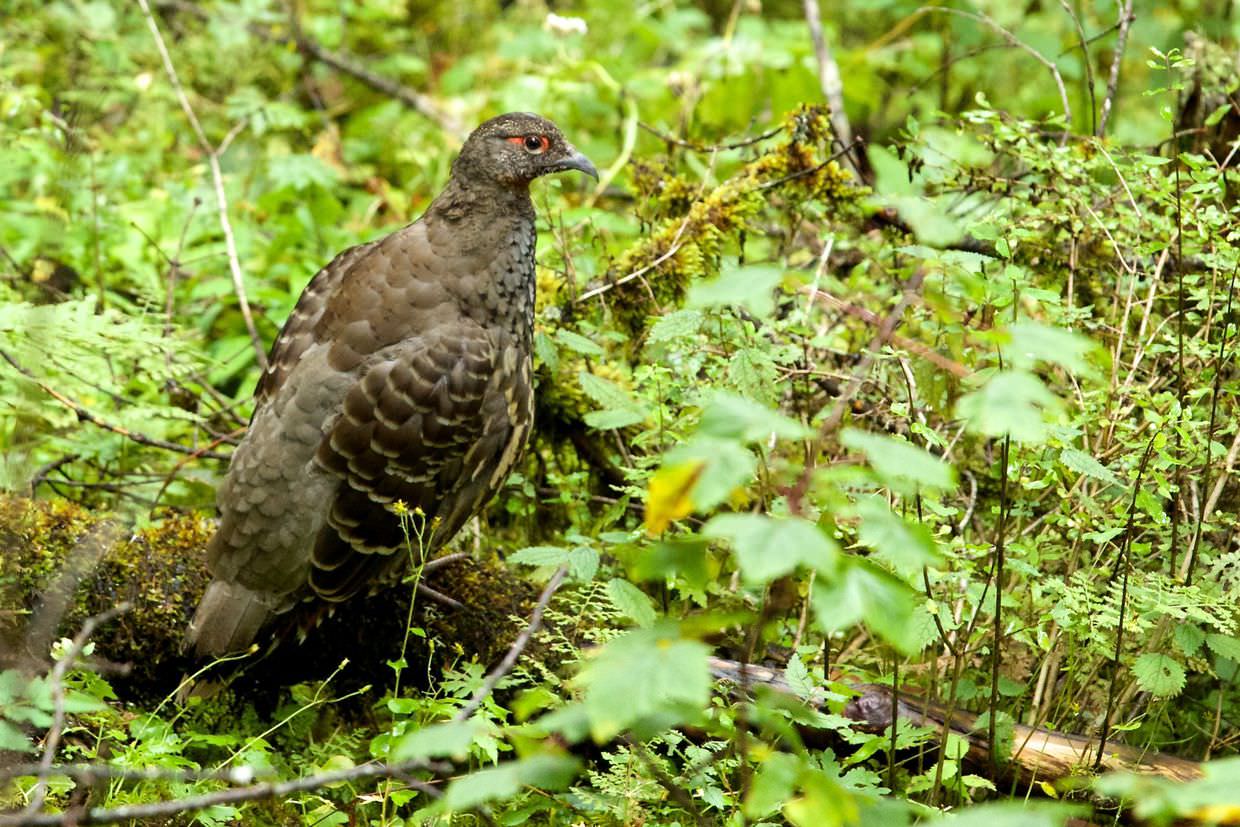
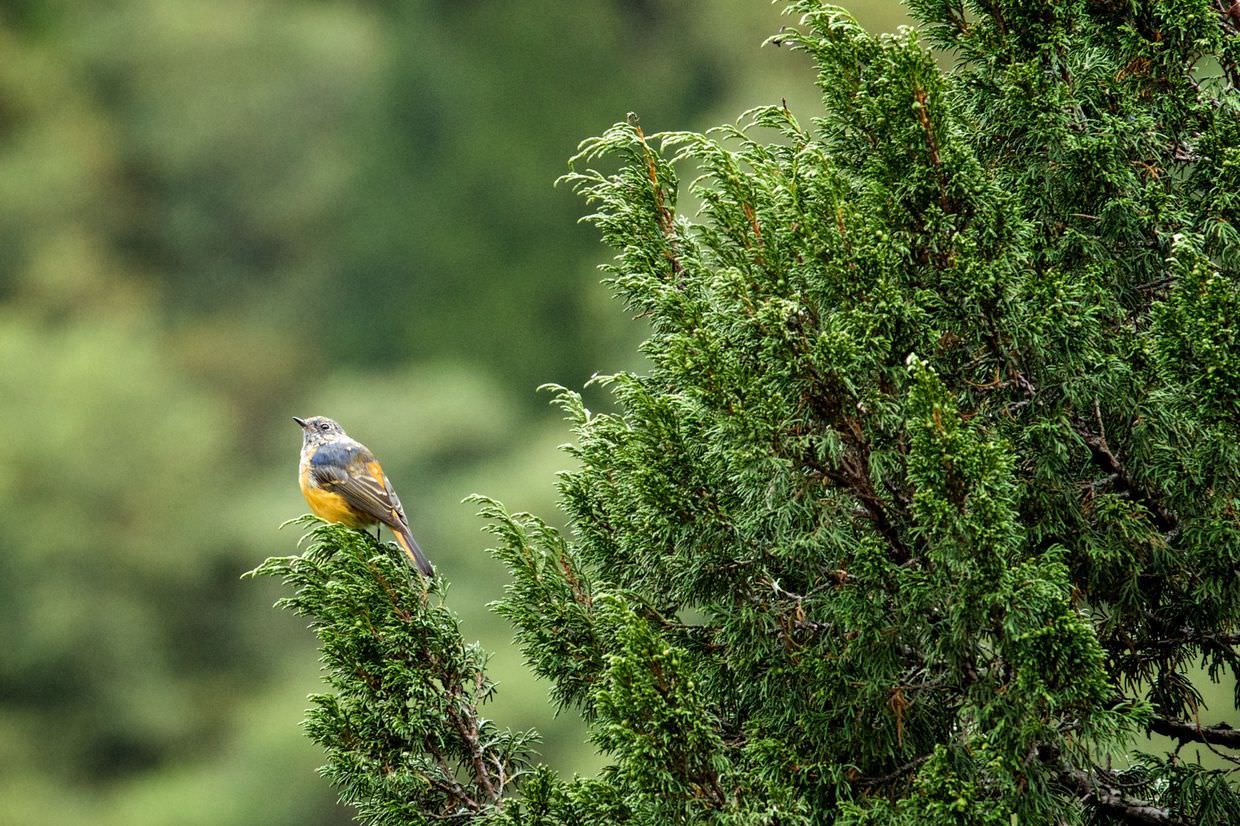
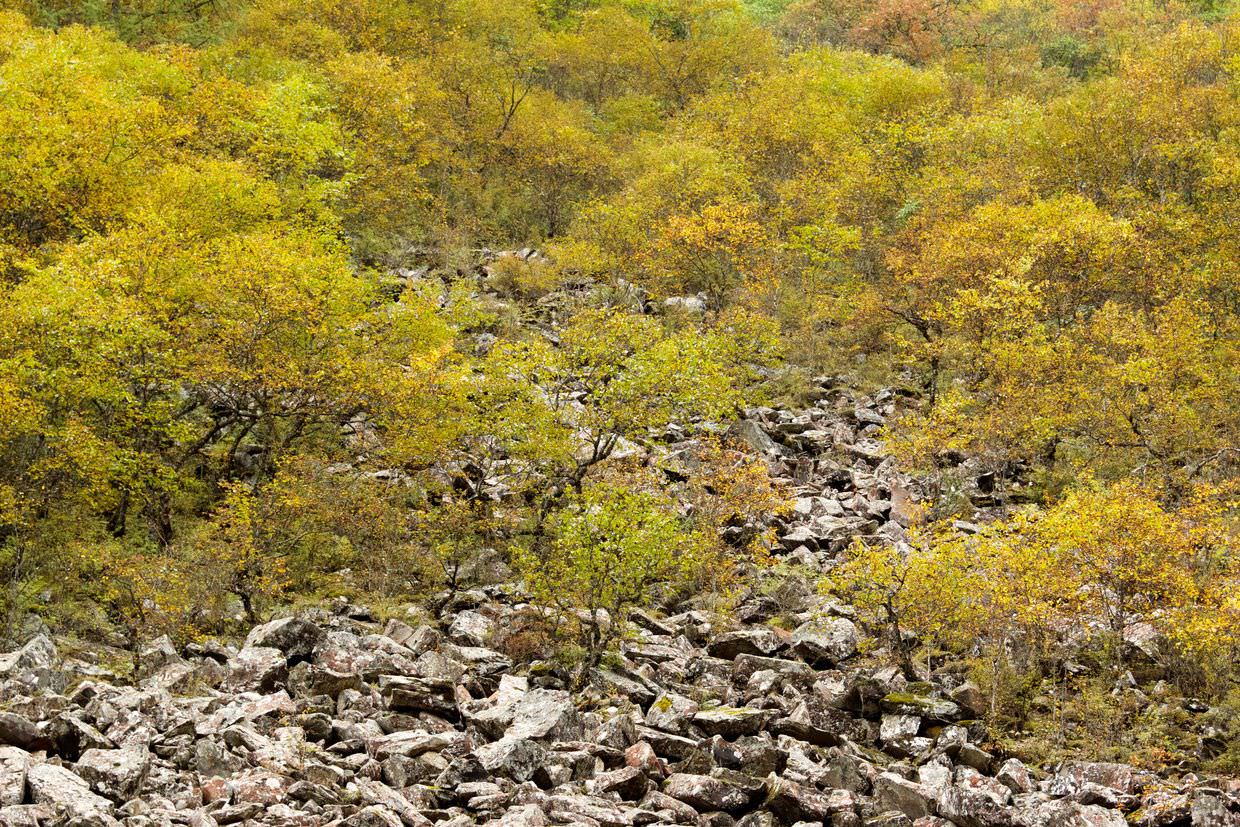
After an hour or so we reached the top of the park where a circular boardwalk takes you around the ‘multi-coloured pond’. Climbing the steps to reach the top of this was hard work. A lot like the Songpan hike yesterday, the altitude meant our hearts were racing, and we could feel our pulse, we felt out of breath. This part of the park is at 3500m and has over 600 tiny pools. Eventually we made it to the pond, which sits above the valley alongside an old temple. A bit unexpectedly we were joined by hundreds of other tourists.
The pools were a gorgeous blue, but to begin with, from the crowded boardwalk viewpoints it was hard to capture in a photo; the overcast sky bleached the water. It wasn’t until we’d walked further around to a higher vantage point that the colours really dazzled us. The light blue tones covered the calcium pools — each filled to the brim with water. The pools are divided by mesmerising wavy borders, built from calcium over thousands of years.
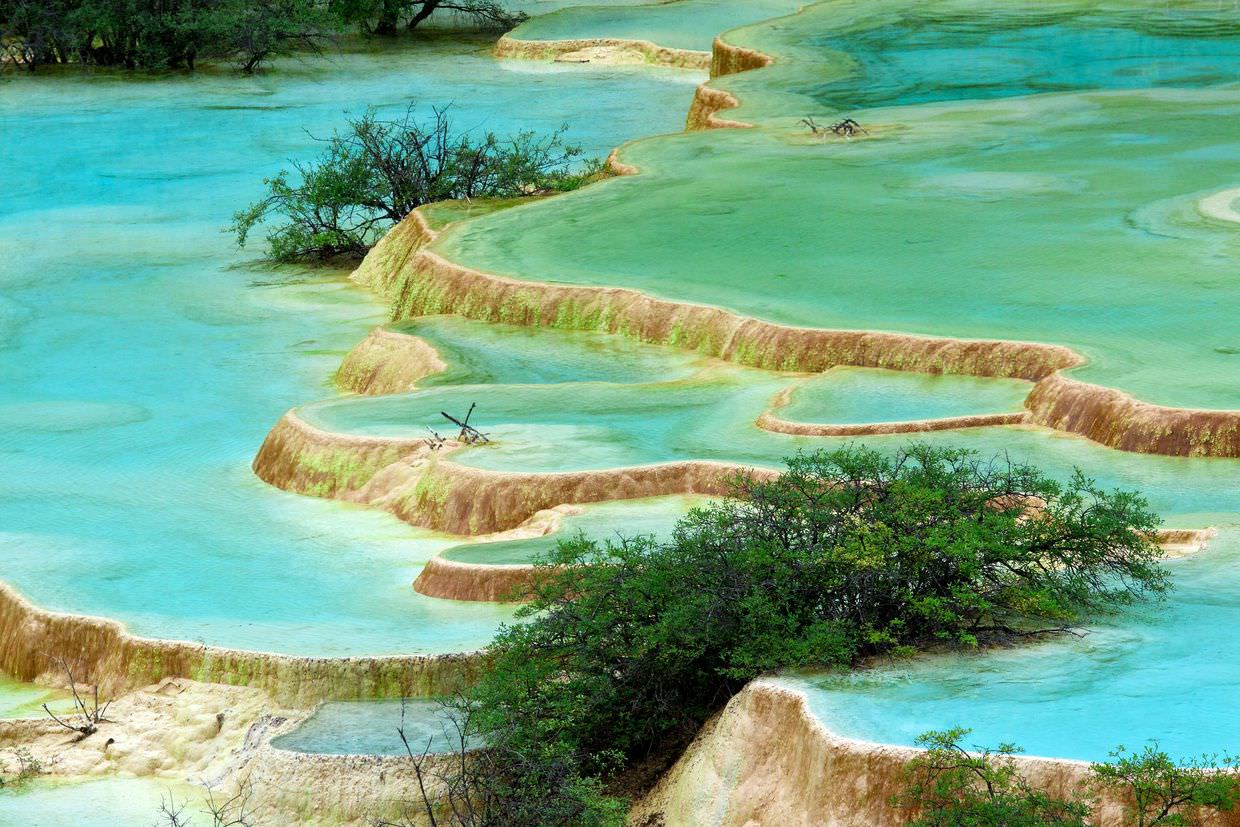
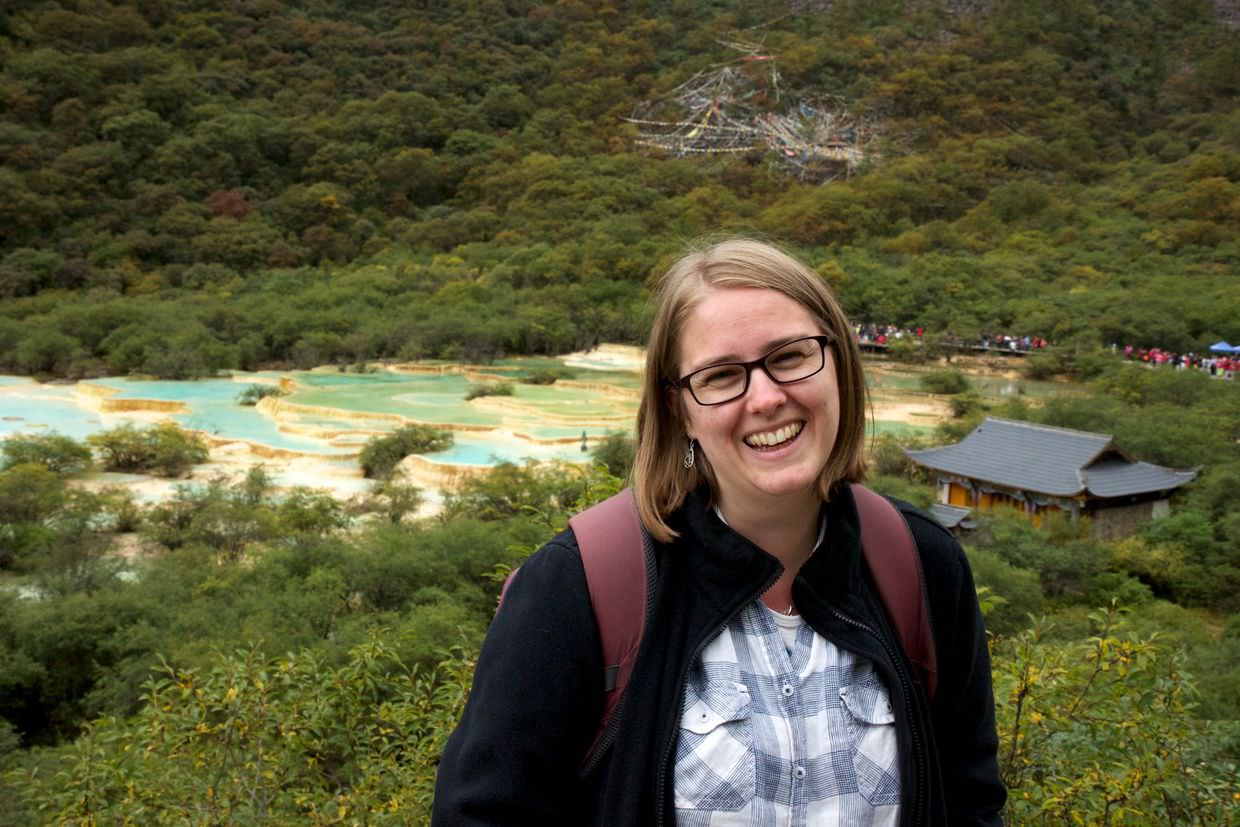
Continuing down the mountain we passed the ‘flamboyant pond’ and ‘azalea pond’. We didn’t have a map and we had no idea how big the park was. Further down, past the bonsai pond and the mirror pond, past waterfalls, alongside hordes of Chinese tourists (not another English speaker in the park). We had 5 hours in total, but 3 hours in and we’d not seen half of it.
The last part of the park, or the start if you do it all up hill from the main entrance, we skipped through far too quickly; eager to get some food, our legs were weary and our meeting time approaching. Yet the fantastic scenery and viewpoints continued. More sky blue pools with birds dancing about the rims, rushing waterfalls, mountain vistas. It’d be a serene place if not for the thousands of trampling feet and squabbles for the best view.
We occasionally took a pause from the sights to photograph the songbirds, which were often close to the paths and noisily chirping.

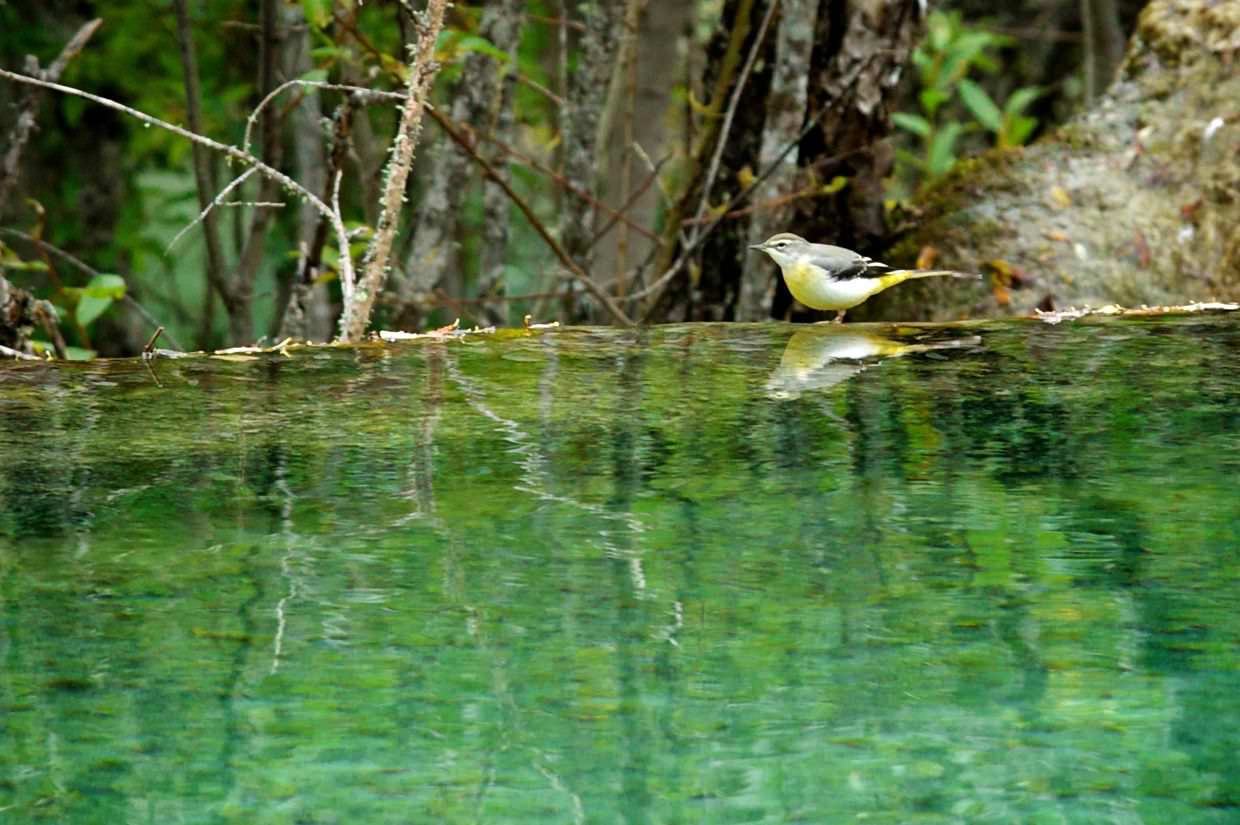
Even hiking down hill we were exhausted, and the hill seemed never-ending. Past us walked Tibetan locals carrying supplies; hoisted on their backs were great sacks of rice and other essentials.
At the end, our feet aching from rushing downhill, we grabbed a doughnut and a pizza before we left. And that was a lucky thing too.
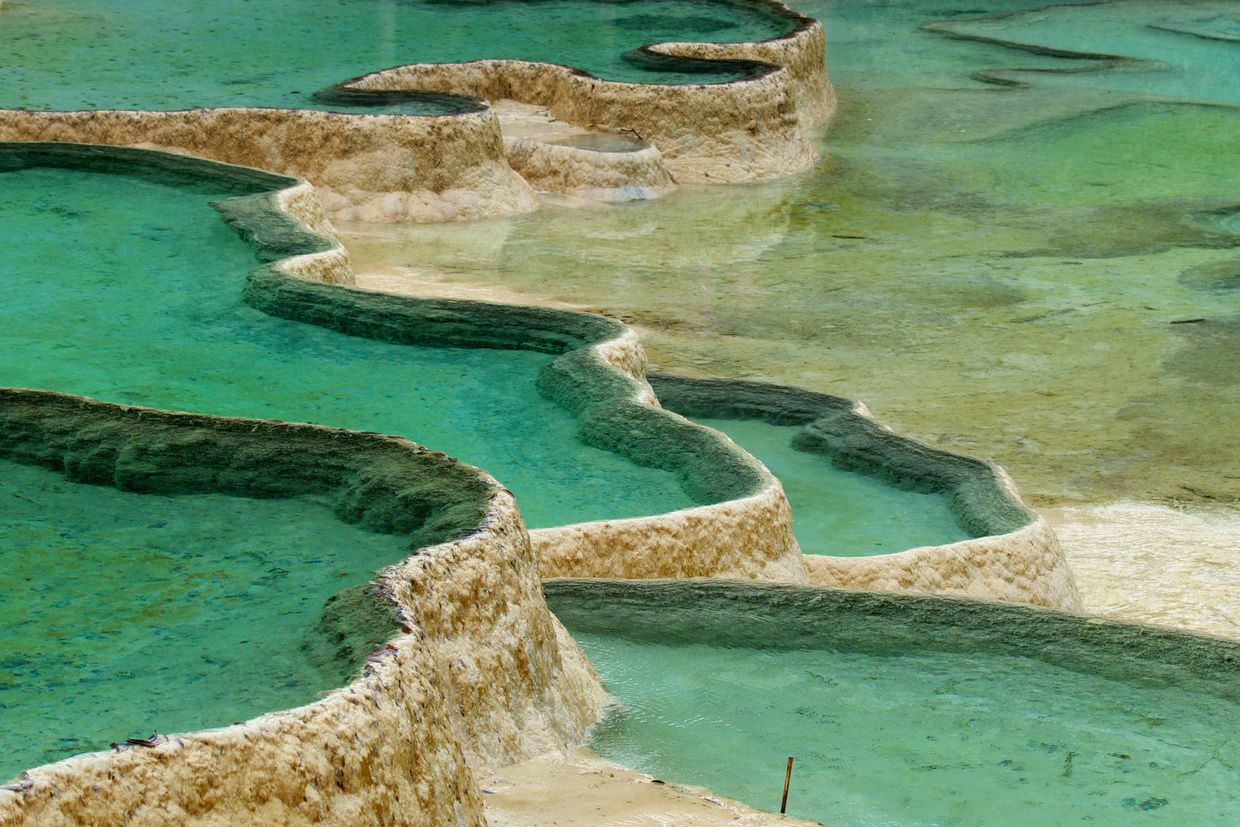
The Traffic Jam
We left Huanglong national park at 4:45pm, expecting a journey of maybe a couple of hours to get to Jiuzhaigou. We’d have a pleasant evening, a nice meal and plan out tomorrow. If only.
First some context. From Songpan and Huanglong there is a single road through the mountains which connects Jiuzhaigou with the rest of the world. There are no turn offs, and it’s a vital route for everyone in the area. Also, for almost a week it had been raining solidly, we had some of the rain in Xi’an, but here it had been worse.
All started well, we had a smooth hours drive north, stopping to pickup our driver’s wife enroute, we think because he knew what was coming and needed a companion for the journey, but we aren’t sure. Anyhow, we continued downwards, into the valley, until we found a queue of cars all with their engines off.
Our driver couldn’t speak English, and we had to guess what was going on. Everyone seemed to know they weren’t going anywhere. We guessed, maybe a yak in the road, maybe a flood, maybe a police roadblock, maybe an accident. We didn’t move for two hours.
From hereon we moved at a snails pace or not at all. The sun set and the dark closed in. We edged north, towards Jiu dao, and the hours begun to fall away. First one hour, then two, then four. Chinese drivers are impatient, and once one driver uses the oncoming traffic lane to jump the queue everyone was doing it.
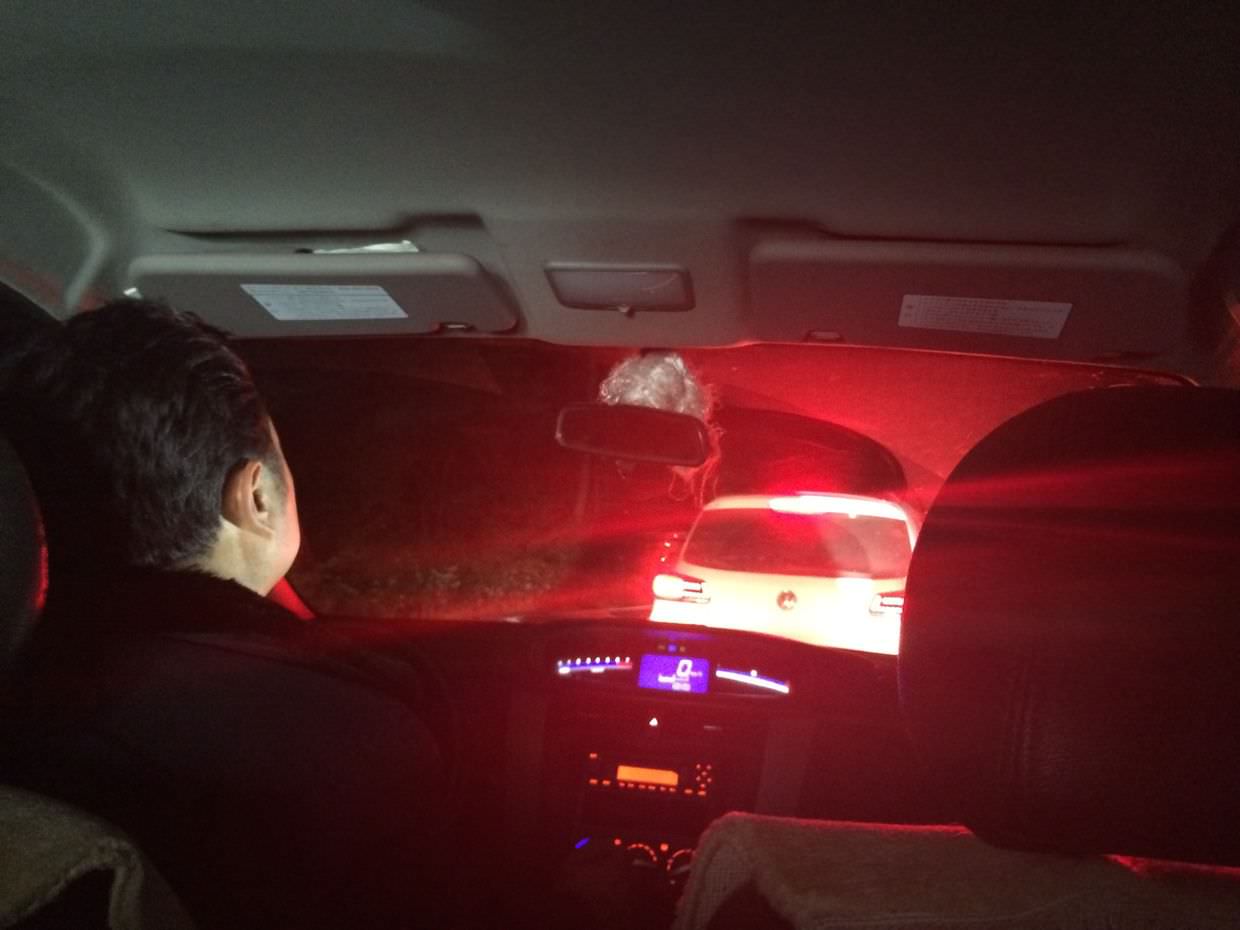
On a hairpin corner we were in a deadlock, traffic going one-way was spread out in four channels, packed across both lanes — one of which should be clear. Buses, minivans, taxis. People got out of their cars and began cooking dinner on the roadside, or brewing tea, or going for a stroll; we were 5 hours in now. We begun to wonder whether we’d make it to the hotel tonight, if at all.
Another hour passed, engines switched off, lights off, people bedding down and trying to sleep. The silence and deadlock was broken by police officers and soldiers with loudspeakers, they coordinated the traffic and made room for oncoming vehicles to get through. Then we began to move, and we passed a convoy of 13 parked trucks. That couldn’t be the reason for the whole jam?
We thought that was it, traffic begun moving freely again, for a few kilometres, until, with dread, we stopped again, on the first turn of Jiudaoguai. We groaned as drivers begun to block the lanes again, and for three more hours we crawled along the 9 hairpin turns of Jiudaoguai. Those few kilometres took another 4 hours, and by now it was way past midnight and every minute in the car was a minute of lost sleep.
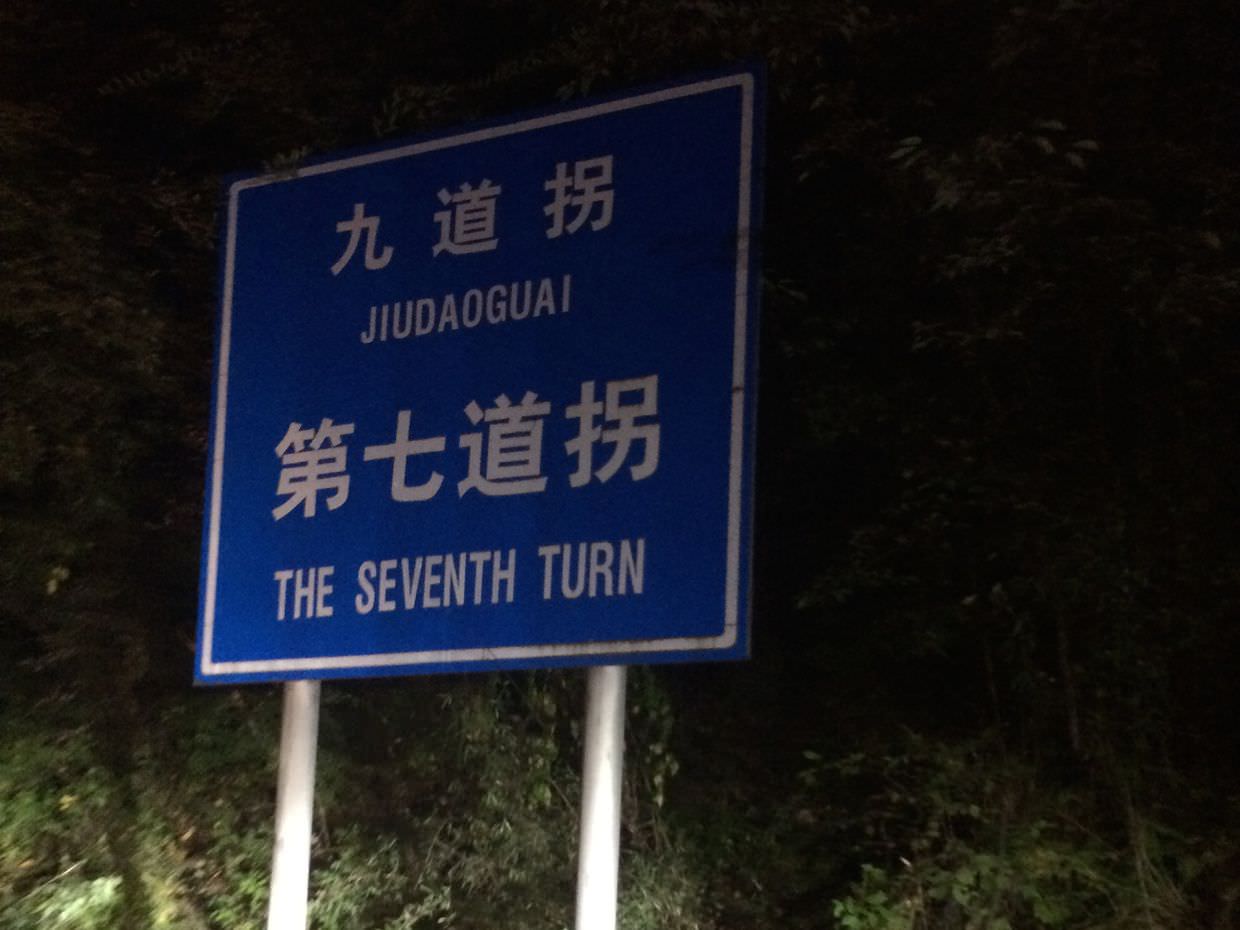
We tried to sleep, curled up one way, then another, but a backseat isn’t big enough for two sleepers. We contemplated using the boot too, but that wouldn’t work either. I gave up and put on some music, and begun texting people in hope of finding out what was going on.
The road follows a river down the mountain, and at times the two are very close. Parked in the dark, I shone a torch into the foliage and was shocked to see the river perilously close to bursting its banks and flooding the road we were on. It roared past, mere inches shy of the tarmac. I couldn’t possibly sleep knowing that.
At 3am we neared Lamagang, where the source of the trouble had started. The river had actually burst its banks here, and an emergency dam had been built. Traffic was being redirected around the flooded road on a dirt track up a hill. The army and police were here controlling the one-way flow, but the villagers were out in force too. As cars revved and slipped trying to climb the worsening muddy road they helped in groups, pushing from behind to get them up and over, one at a time. I can’t imagine how any of the buses could get through that.
Then the traffic was gone, another 30mins and we were at our plush hotel New Jiuzhai Hotel, checking in. Our legendary driver told us he’d pick us up for our park tour at 9:30am the next morning, and by 4am we were asleep in our hotel beds. Just an hour earlier we expected to be in the car all night, to be too tired for our Jiuzhaigou park tour and that the whole trip might have been in vain. The whole trip was just shy of 11 hours. No food or toilet stops throughout.